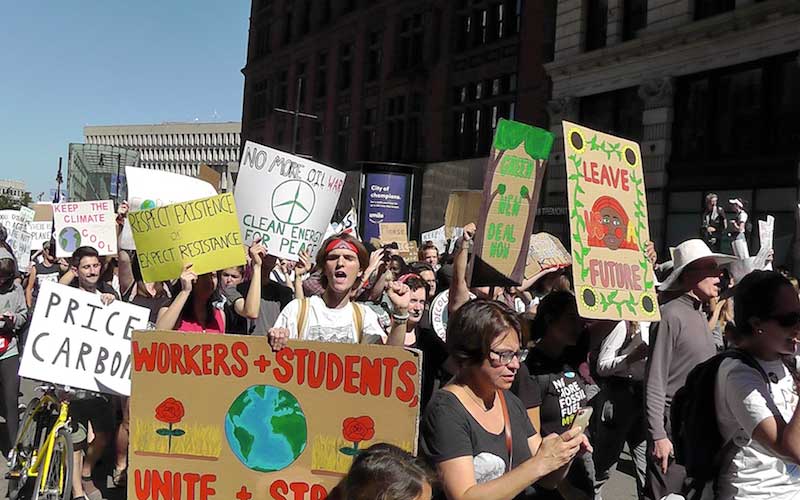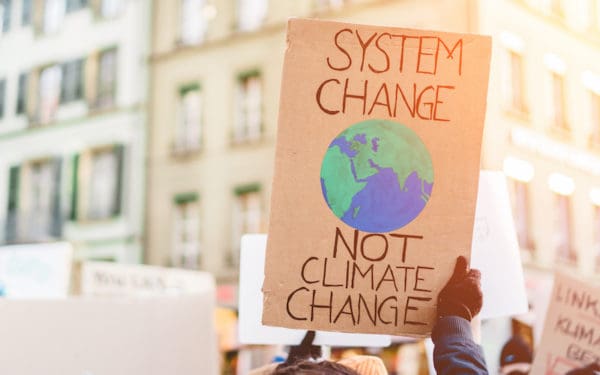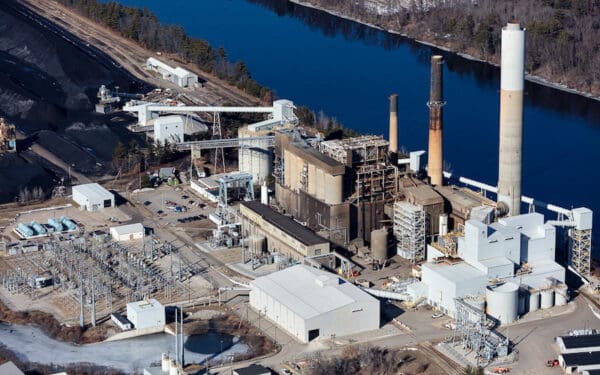
Today, youth activists took to the streets in Boston, MA. Photo Credit: Bethany Kwoka for CLF
Today, we’re joining young people across New England and around the world to strike for our climate. Students everywhere are walking out of their classrooms, joined by adults walking out of their homes and workplaces, to demand our government take action to combat the climate crisis.
This global climate strike also marks the anniversary of Hurricane María. Living in San Juan at the time, I witnessed this devastating storm rip through Puerto Rico two years ago today, claiming lives and destroying homes, its record intensity fueled by a changing climate.
Just a few weeks ago, I nervously watched Hurricane Dorian skirt the Puerto Rican coastline, threatening another disaster for an island still recovering from María’s devastation. Instead Dorian turned northwest to the Bahamas, where it killed 50 and made 70,000 people homeless. In watching, I couldn’t help but ask: What has been done in Puerto Rico to prepare for another hurricane or for other climate change impacts we know are coming? And is New England ready for a catastrophe like this one?
How Puerto Rico Is Faring Two Years Later
Sadly, in Puerto Rico, not much has been done to fortify the island against another María (or Dorian). In fact, the island is still recovering from Hurricane María. Many roads and bridges that collapsed during the disaster have not been rebuilt. Intermittent blackouts still roll through neighborhoods. And blue FEMA tarps still cover thousands of houses across the island.
Recently though, the government released its first ever catastrophe preparedness plan. It coordinates disaster responses between the public and private sectors in the case of future emergencies such as hurricanes, earthquakes, and floods.
The plan recognizes that Puerto Rico has extremely vulnerable communications and electrical infrastructure. It also acknowledges the island’s isolation and its limited ability to provide vital health and safety services in times of disaster. Additionally, it shows that the federal government lacks clear plans to help the island territory respond to catastrophe.
This means that my family—and thousands of others on the island—remains at risk. This year’s hurricane season is far from over, and storms like María and Dorian are the new normal when it comes to storm strength and ferocity. Our federal and local governments need to do more to ensure Puerto Rico is not left vulnerable.
Is New England Ready for Climate Change?
New England, a region less accustomed to hurricanes or tropical storms, has also not done much to prepare. The last hurricane to make landfall here occurred in 1991; however, Hurricanes Irene (2011) and Sandy (2012), though downgraded to tropical storms by the time they reached us, both wreaked havoc, killing 16 and 5 people in New England, respectively. And, just a couple of weeks ago, Cape Cod was within striking distance of the remnants of Hurricane Dorian. Downeast Maine and Nova Scotia, meanwhile, experienced damaging winds, heavy rains, and storm surge as Dorian wound down to a tropical storm.
It’s not just hurricanes and tropical storms we need to worry about. We’re also in the path of worsening Nor’easters and a new phenomenon known as bomb cyclones – essentially a winter hurricane. New England is also being hit with heavier and more intense rains every season, and the flooding that comes with them. This is only predicted to get worse.
The impacts of our changing climate are here now—and we’re not ready for them. We need to prepare and fortify our communities for our current climate reality, and we must act urgently to cut emissions to prevent even worse impacts of climate catastrophe in the future. That’s why we need strong laws on the books that demand our states reach zero polluting emissions by 2050. Only through robust climate legislation can we prevent the worst impacts of climate catastrophe.
Taking Action to Fight Climate Change
As I remember the lives lost in Puerto Rico to Hurricane Maria, I urge you to join the millions of people on strike today demanding climate action and climate justice. We have the solutions to solve the climate crisis, but we need our political leaders to take action – now.
So if you can, take to the streets in solidarity with youth around the world. Share photos of your local strike, sign our petition demanding local action, and find out if your state has a climate preparedness plan they are ready to put into action if, and when, climate impacts strike your neighborhood.
This post was co-authored by Rohemir Ramírez and Bethany Kwoka.



